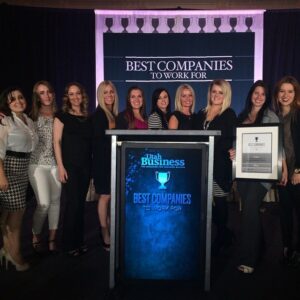If you’re into skin care, you may have a multi-step daily skin care regimen or be scouring beauty YouTubers’ channels for advice and suggestions, and you’ll always have skin care recommendations for your friends dealing with dryness or pimples. If you enjoy the science behind skin and have a desire to help people, consider becoming a skin therapist or esthetician. But what are estheticians? You might be wondering, are there esthetician schools?
Estheticians are people that specialize in enhancing the skin. Estheticians provide cosmetic skin care services, such as facial treatments and more advanced exfoliation therapies, laser hair removal, nail treatment, waxing, eyelash and eyebrow work, and makeup application during their job. Estheticians help with waxing, laser hair removal, massage and other treatments. They may work in salons, day spas, skin spas, medical spas, dermatologist offices, or medical practices.
All of this may sound sensible with your objectives in mind, but you might have a few concerns: How do I go about becoming an esthetician? What is the process of becoming an esthetician, and how long does it take? What do esthetician schools entail, and what do you learn in one?
To respond to the first set of questions, the timetable for becoming an esthetician varies by location, depending on licensing and certification standards as well as the duration of your esthetics education. Esthetician schools generally last between a few weeks and two years, depending on the program. For some courses, such as a two-year associate’s degree in esthetics, you may anticipate to spend up to two years in school.
What Does Esthetician School Consist Of?
To address the second aspect of what you’ll learn in esthetician school, we’ve put up a short sample course list to help you visualize what esthetician school is like and what it entails in terms of study.
Note: At any college or institute, our training curriculum is updated on a regular basis, so the esthetician class names and descriptions you see may vary after you’ve signed up for and taken the course. You may also ask us for more information about what your specific program will entail when you request further information throughout the application process.
Esthetician School: A Quick Course Guide In addition to theoretical and practical applications of esthetics, your program should provide training in both. The coursework may cover dermatology, physiology and histology of the skin, product chemistry and components, and salon safety and cleanliness. The practical side of the program focuses on developing hands-on skills that will help you flourish as an esthetician. Waxing instructions are among the many training topics available. Depilatory waxing procedures, mask therapy, make-up application, and more are just a few examples of lesson plans.
Below are some classes you might take at esthetician schools:
Aging and Advanced Body Techniques: This section discusses the development and management of aging theories, as well as bodily processes such as wraps, scrubs, body masks, and sunless tanning.
Anatomy and Physiology: Students study the physiology and histology of skin cells and tissues in this lesson to better comprehend how skin works.
Business: Business courses cover resume writing, interview skills, job hunting, and business/professional growth to prepare youngsters for a career in esthetics.
Color Theory and Makeup: In this course, students learn the major concepts of color and how to apply makeup. Students learn how to use makeup for a variety of purposes, including daily makeup, formal make-up application, and corrective make-up.
Cosmetic Chemistry: This covers the fundamental principles of chemistry and biochemistry, as well as the physical and chemical characteristics of items (including frequent components in skin care formulations that might aggravate sensitive skin and allergies), pH, and how all of these things impact upon skin care products and therapies.
Dermatology: Dermatology courses educate students to diagnose skin diseases and flaws, understand the contraindications to therapy, and know when to send a client to a dermatologist.
Electricity: This section covers the basics of electricity, including safety concerns, as well as equipment used in the esthetics business.
Masks: Students learn about masks (including natural-ingredient mixing masks), application methods, and mask contraindications.
Massage Techniques: This course covers basic massage strokes, as well as the advantages and contraindications of facial massage, body mechanics, reflexology, and lymphatic drainage.
Medical Esthetics: Estheticians can explain to those interested in working in a medical office or medspa about the scope of a physician’s practice and the many pre-operative and post-operative treatments that they may perform.
Methods of Hair Removal: This portion of the protocol addresses client preparation, proper waxing techniques, and waxing precautions, as well as gender-specific considerations. Sanitation, safety, and first aid for emergency situations are also addressed.
Sanitation — Bacteriology and Infection Control: This section discusses the levels of decontamination, including sanitation, disinfection, and sterilization, as well as how to sanitize a variety of equipment and surfaces in the treatment room.
Skin Analysis: It also helps students figure out what type of skin they have and the reasons for any problems.
Skin Clinic: Students in this program acquire practical experience by utilizing the skills and expertise they’ve learnt in class on people from the general public.
Want to Know More About What It’s Like?
Become a licensed aesthetician with NIMA Institute, an esthetician school! We offer multiple programs to earn your licensure with us including Nevada 900 Hour Aesthetics, Utah 1200 Hour Master Aesthetics, Utah 750 Hour Master Aesthetics, and Online options. Our full curriculum will prepare you for your career in this industry.
Already a licensed aesthetician? Advance your career with our certification courses. Build up your resume with everything from Advanced Peels to Vampire Facials. There are so many opportunities in the aesthetics industry, let NIMA Institute show you the way.
To learn more about how to find an esthetician school, contact us or check out our blog!





